Fontainebleau Palace, a gem located about 55km south of Paris, is a must-visit destination for those who love French history, architecture, and art. With over 800 years of history, Fontainebleau is not only a residence of French monarchs but also a unique cultural symbol, a convergence of architectural styles from the Middle Ages to the Renaissance and Baroque. Are you ready to explore the most detailed visitor guide to Fontainebleau State Park?
Discovering Fontainebleau Palace: A Journey Back in History
Introduction to Fontainebleau Palace
Fontainebleau Palace, originating in the 12th century, has undergone numerous expansions and renovations, especially under King François I in the 16th century. He transformed it into a magnificent Renaissance palace, attracting talented artists and architects from Italy to work there. Through various dynasties, Fontainebleau continued to develop, becoming a unique architectural complex where many important historical events took place, contributing to the rich cultural heritage of France.
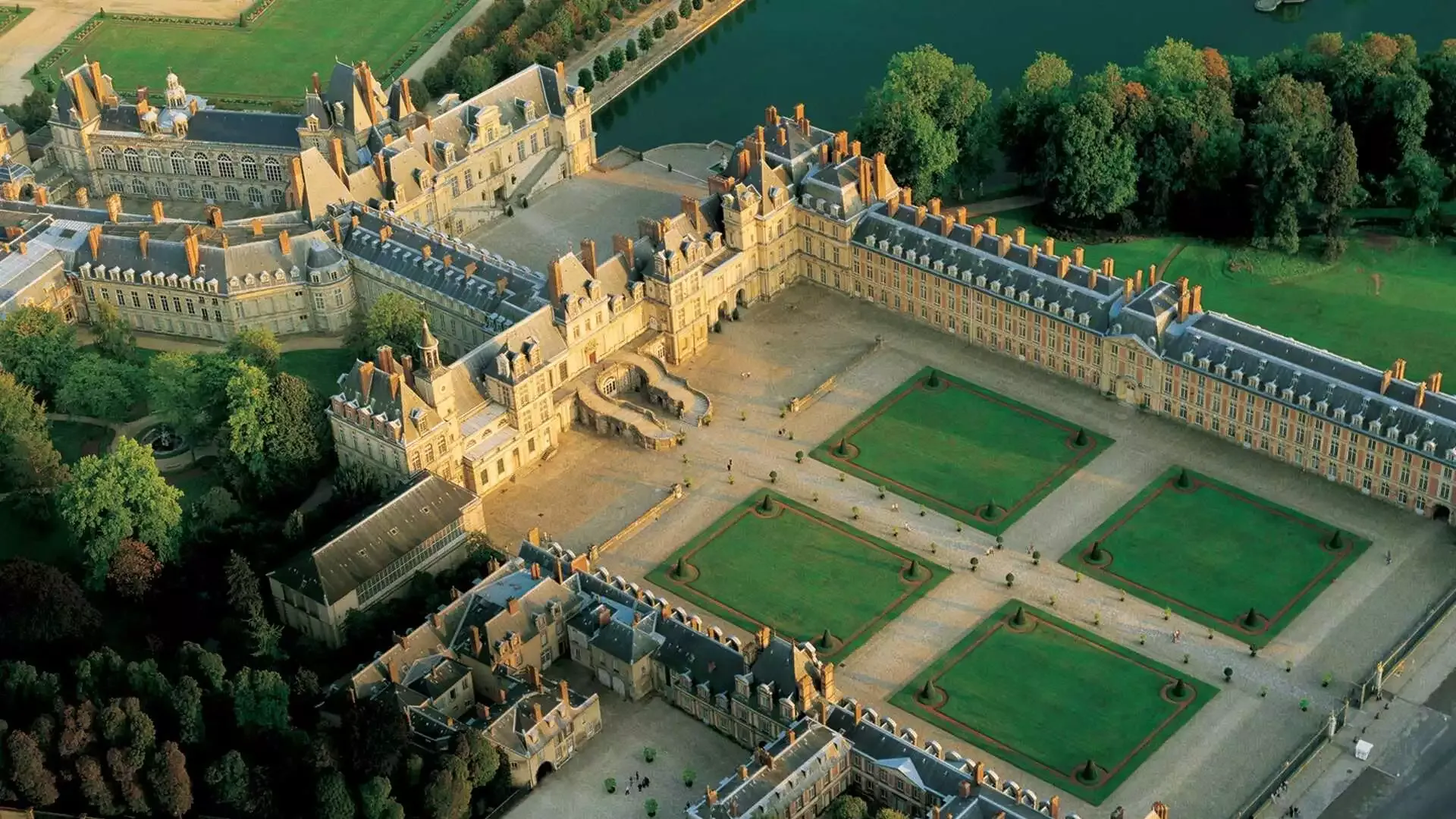
Key Milestones in Fontainebleau’s History
- 12th Century: King Louis VII began building Fontainebleau as a royal hunting lodge.
- 1528: King François I transformed Fontainebleau into a magnificent Renaissance palace.
- 1601: King Henri IV expanded the palace and built the Royal Park.
- 1664: King Louis XIV continued to decorate and expand Fontainebleau.
- 1804: Napoléon Bonaparte chose Fontainebleau as his residence and renovated many rooms.
- 1814: Napoléon signed the Treaty of Fontainebleau, abdicated, and bid farewell to his army here.
- 1927: Fontainebleau Palace became a national historical monument.
Unique Architecture of Fontainebleau Palace
Magnificent Exterior
Fontainebleau Palace impresses with its expansive layout, buildings connected by courtyards and corridors. The facade stands out with towers and bell towers elaborately decorated in the Renaissance style. Large windows and doorways are meticulously carved, creating a majestic and elegant beauty.
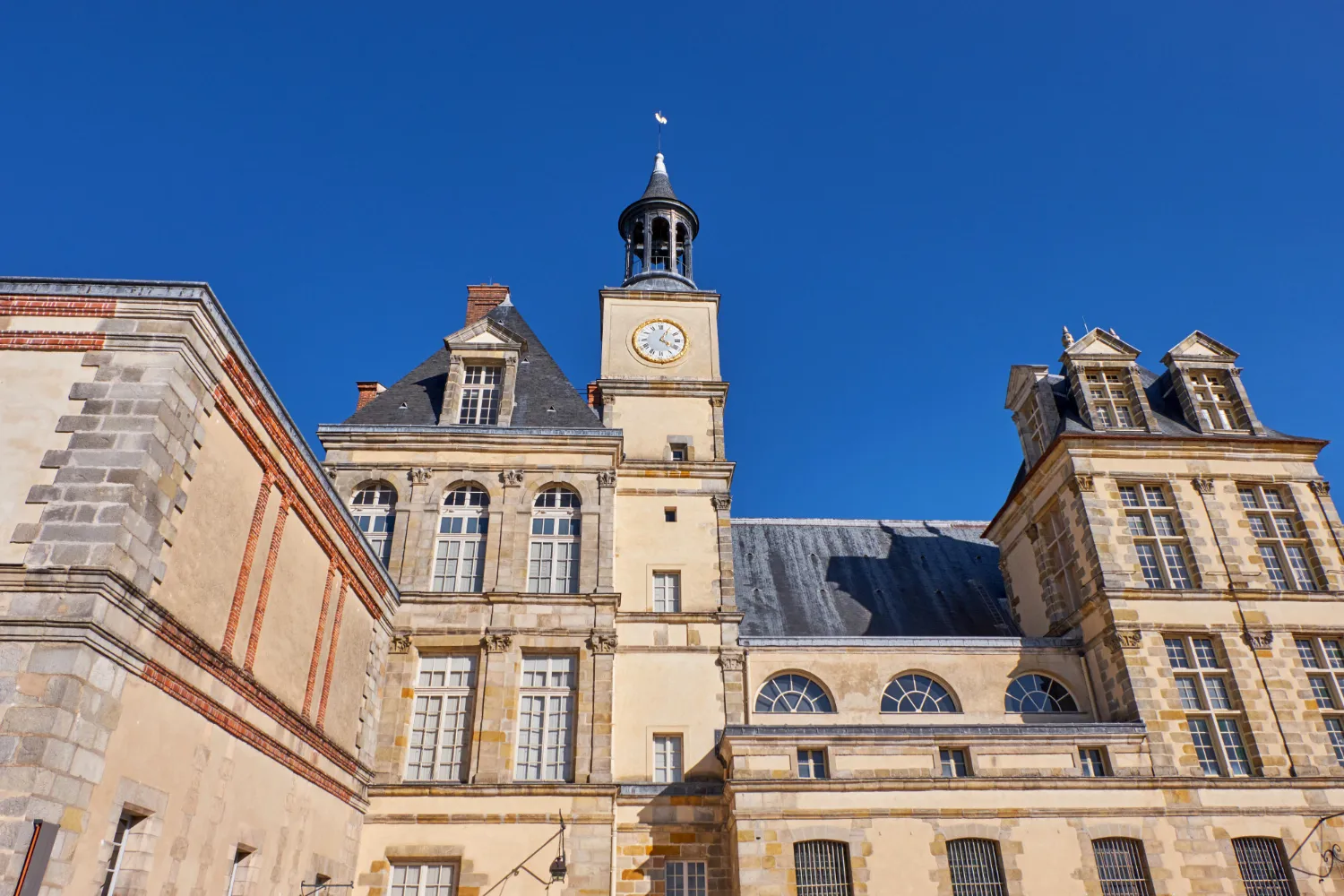
Cour d’Honneur (Court of Honour)
The Cour d’Honneur is where Napoléon Bonaparte bid farewell to his army. Surrounded by buildings of classical architecture, the courtyard evokes a sense of solemnity and history.
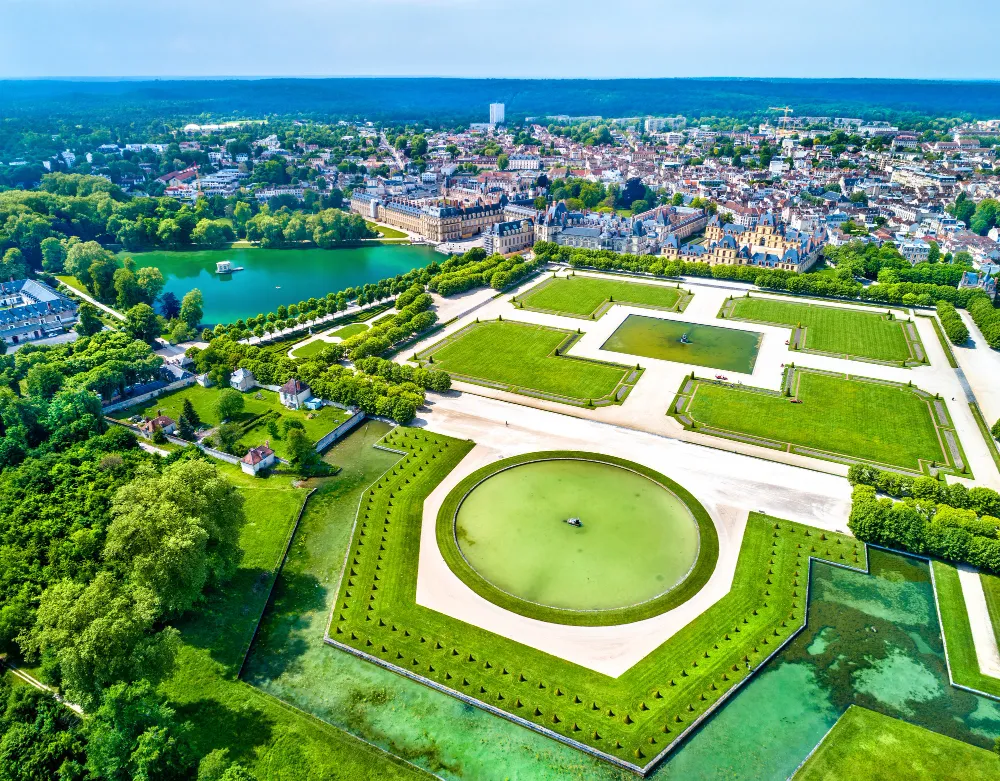
Lavish Interior
Inside the palace, the rooms are lavishly decorated. Napoléon’s throne room impresses with its high ceilings and gilded walls. The Queen’s bedroom and banquet halls are also notable spaces with murals and exquisite furnishings.
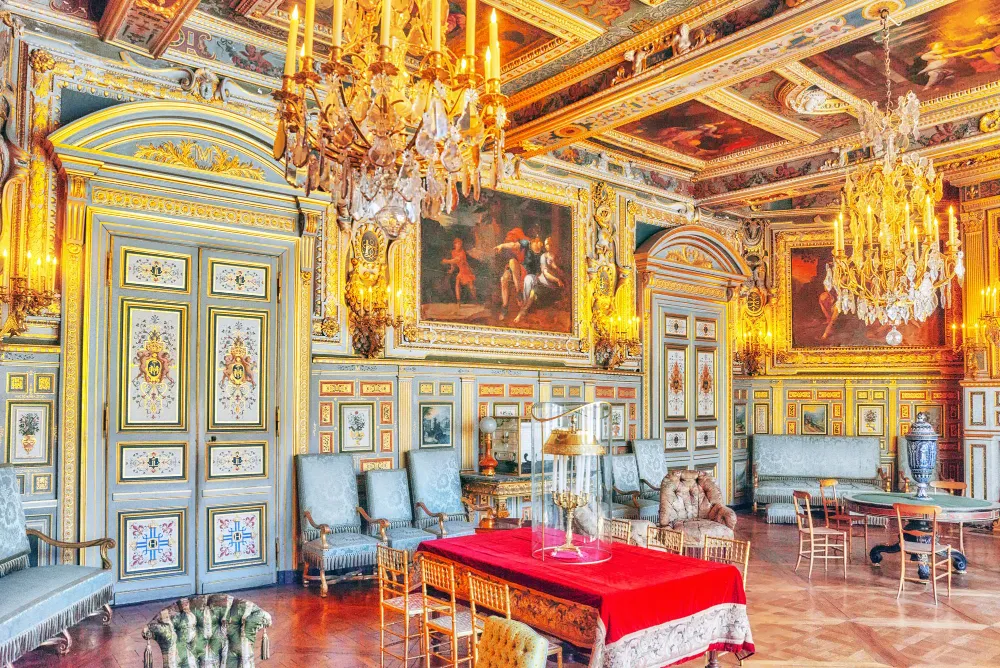
Beautiful Parks and Gardens
Fontainebleau Palace is surrounded by the Royal Park and the English Garden. These gardens feature stone walkways, fountains, and ponds, creating a poetic and peaceful setting. The 1200-meter-long canal built by Henri IV brings freshness and harmony to the entire area.
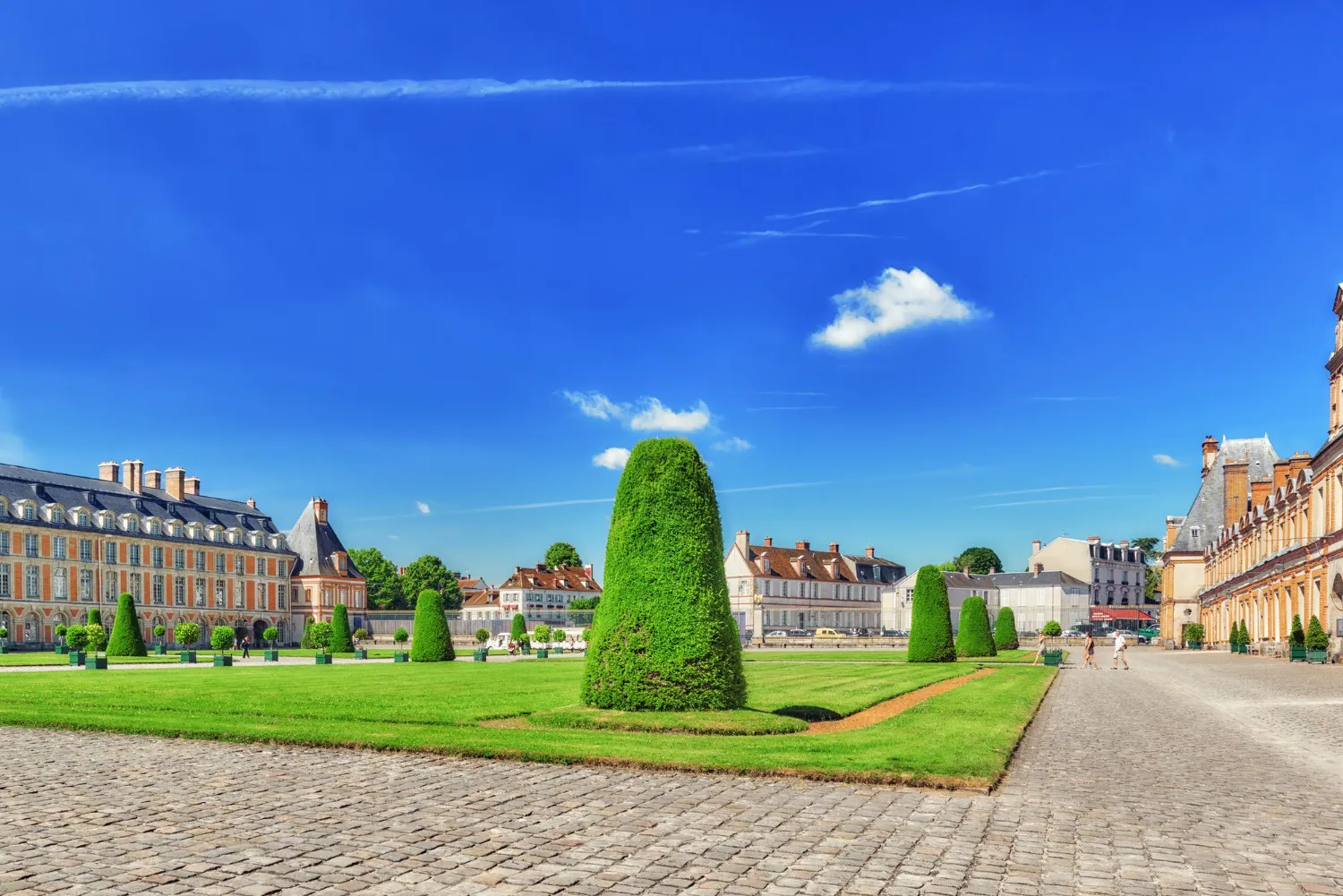
Detailed Itinerary for Visiting Fontainebleau Palace
Starting from Paris
To get to Fontainebleau Palace from Paris, you can take the metro to Gare de Lyon, then transfer to the R-Gamo train to Fontainebleau Avon station. From the station, take bus number 1 to the palace. The total travel time is about one and a half hours.
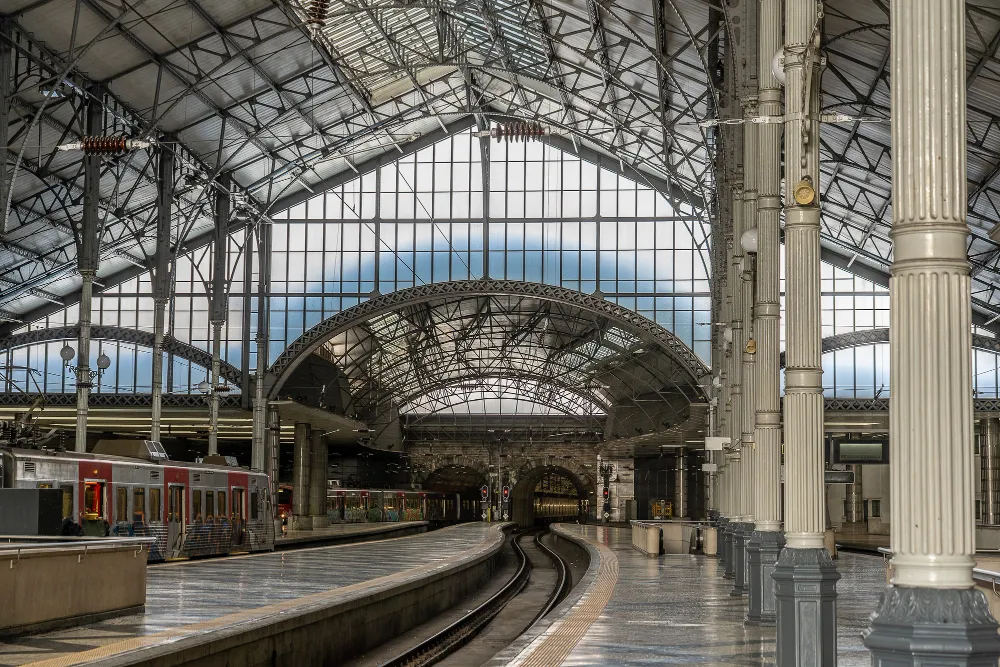
Exploring the Palace
Start your tour from the main gate, where you will see the magnificent facade of the palace and the lush green gardens. Next, you will reach the Cour d’Honneur and admire the famous Escalier du Fer-à-Cheval (Horseshoe Staircase).
From the Cour d’Honneur, enter the Grands Appartements, which house the lavish royal rooms, including Napoléon’s throne room and the Queen’s room. Then, you will visit the Salle de Bal (Ballroom) and the Chapelle de la Trinité (Trinity Chapel).
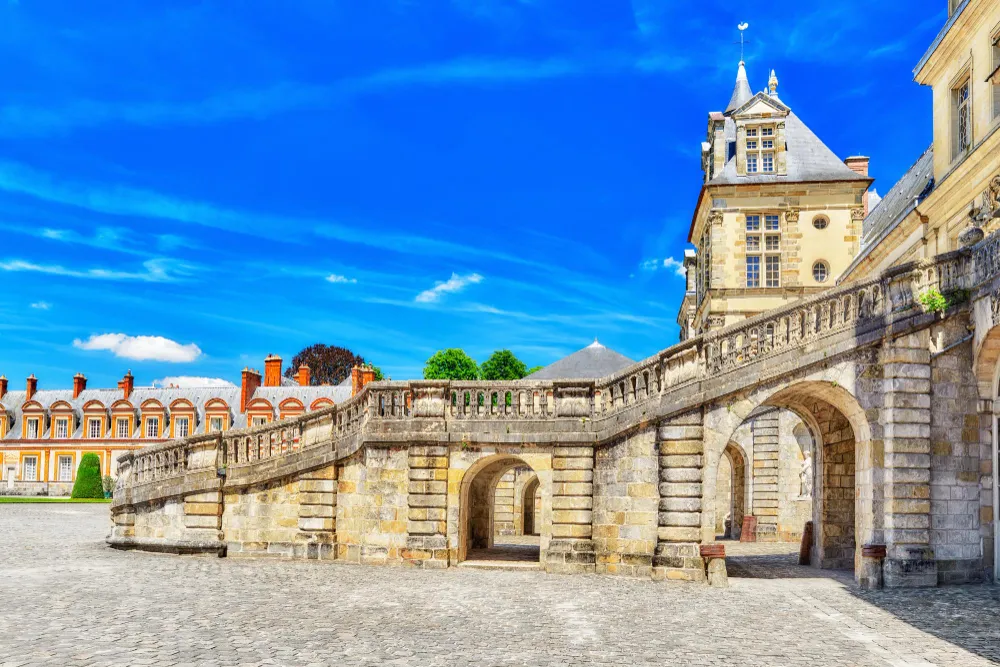
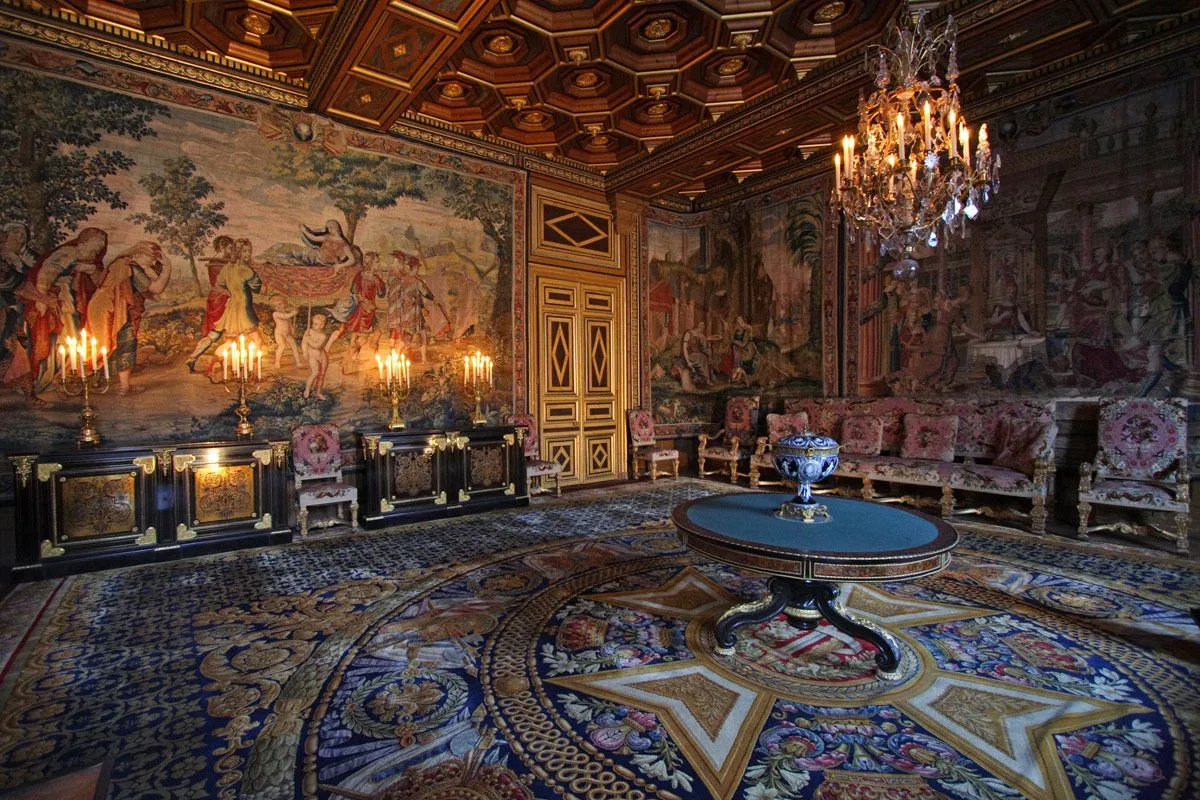
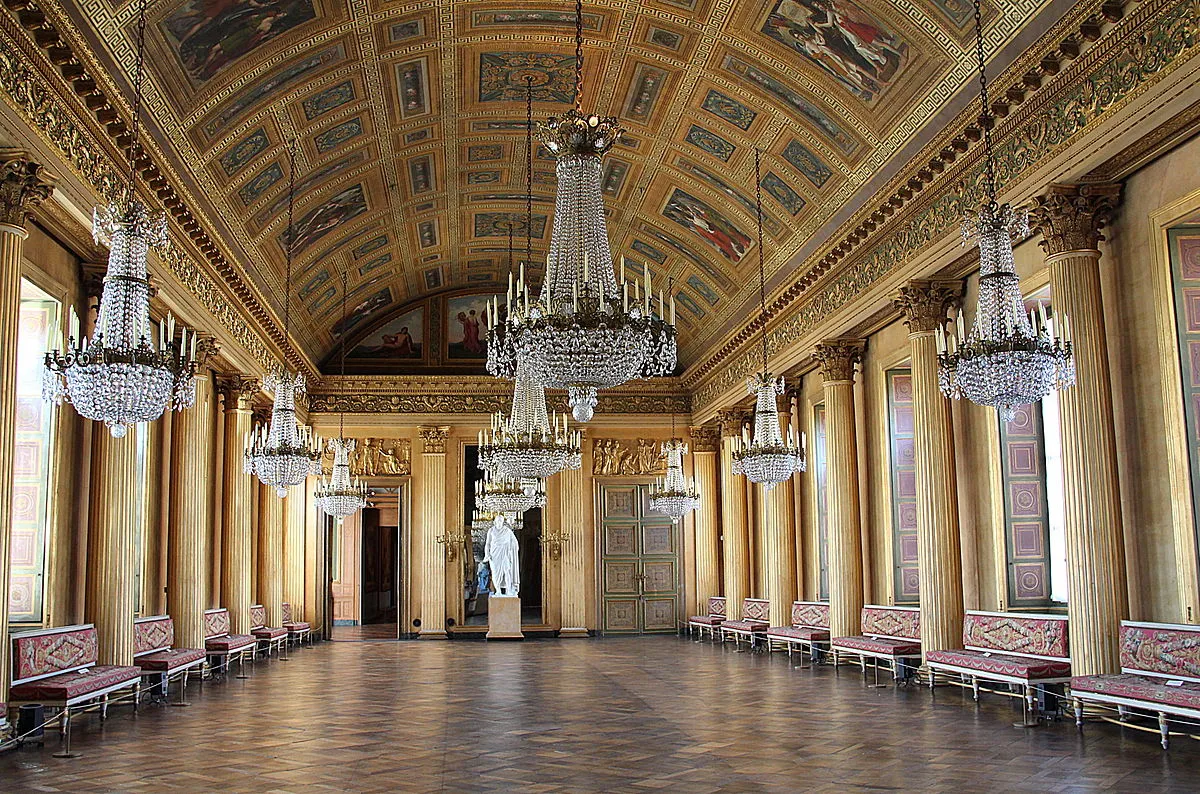
After visiting the royal rooms, you can visit the Napoléon Museum and stroll through the English Garden and Royal Park.
Ending the Journey
Finally, you can stop at the café or souvenir shop in the palace grounds to relax and shop.
Guide to Buying Tickets
You can buy tickets online through the official palace website or directly at the ticket counter. The standard ticket price is around 12-15 EUR for adults. Admission is free for children under 18 and EU students under 26.
Buying Tickets Online
- Visit the official website of Fontainebleau Palace: www.chateaudefontainebleau.fr
- Select “Tickets” or “Book Your Tickets”.
- Choose the ticket type, date and time of visit, and number of tickets.
- Pay and receive your e-tickets via email.
Buying Tickets Directly at the Palace
- Location: Château de Fontainebleau, 77300 Fontainebleau, France.
- Opening Hours: Usually from 9:30 AM to 5:00 PM (October – March) or 6:00 PM (April – September).
- Ticket Price: Approximately 12-15 EUR for adults.
Reasonable Time Allocation
To fully explore the beauty of Fontainebleau Palace, you should spend 3 to 4 hours for your visit. Here is a suggested time allocation:
- Exploring the palace interior: 1.5 – 2 hours
- Visiting the gardens and park: 1 – 1.5 hours
- Rest and photo time: About 30 minutes
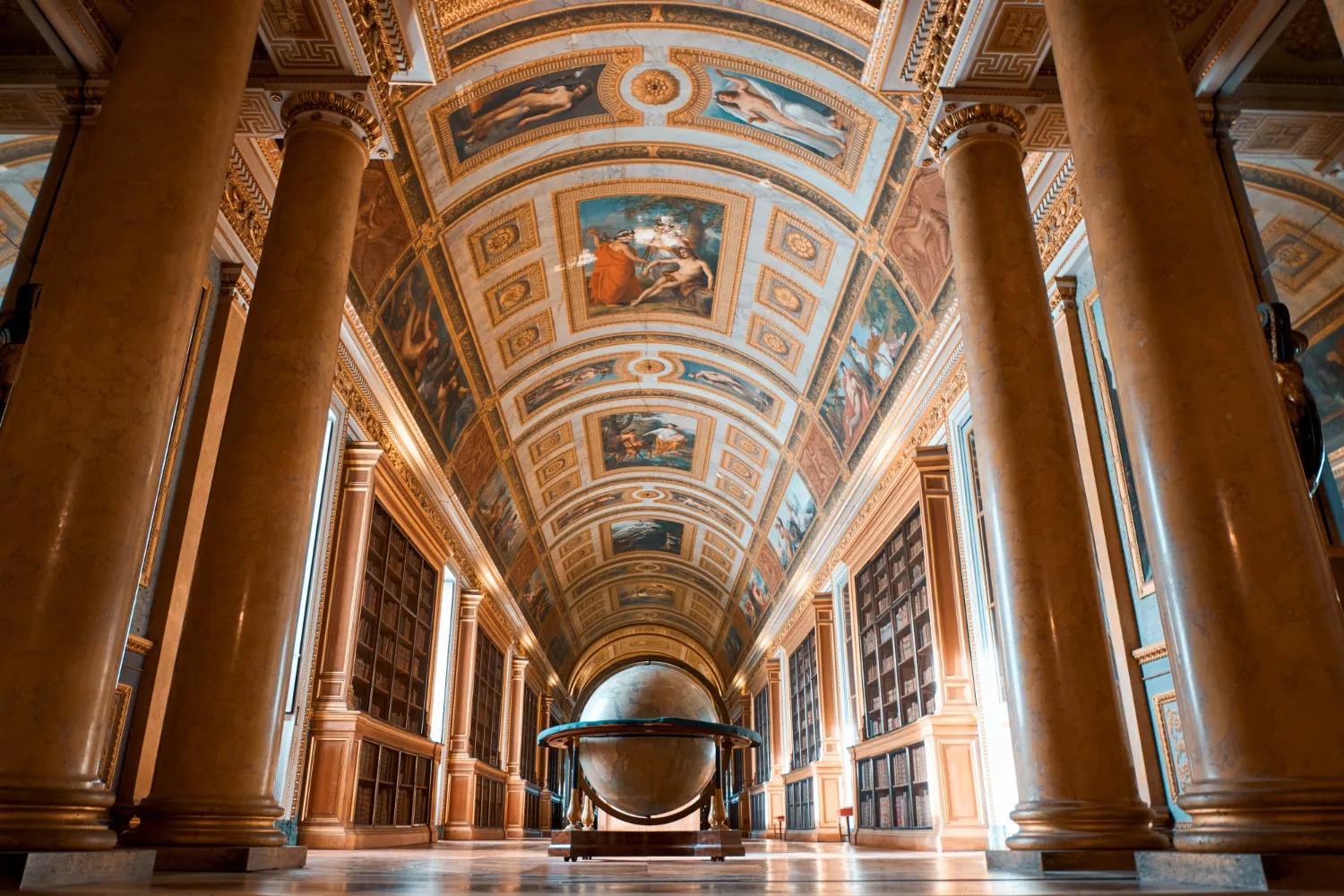
Fontainebleau: Priceless Historical Heritage
Fontainebleau Palace is not just an architectural work but also a living historical treasure of France. It has witnessed many important events and preserves valuable historical stories. With its blended beauty and history, Fontainebleau is a wonderful destination for those who love culture and art.
If you have the opportunity to visit Paris, do not miss a trip to Fontainebleau Palace to discover the priceless cultural heritage of France.